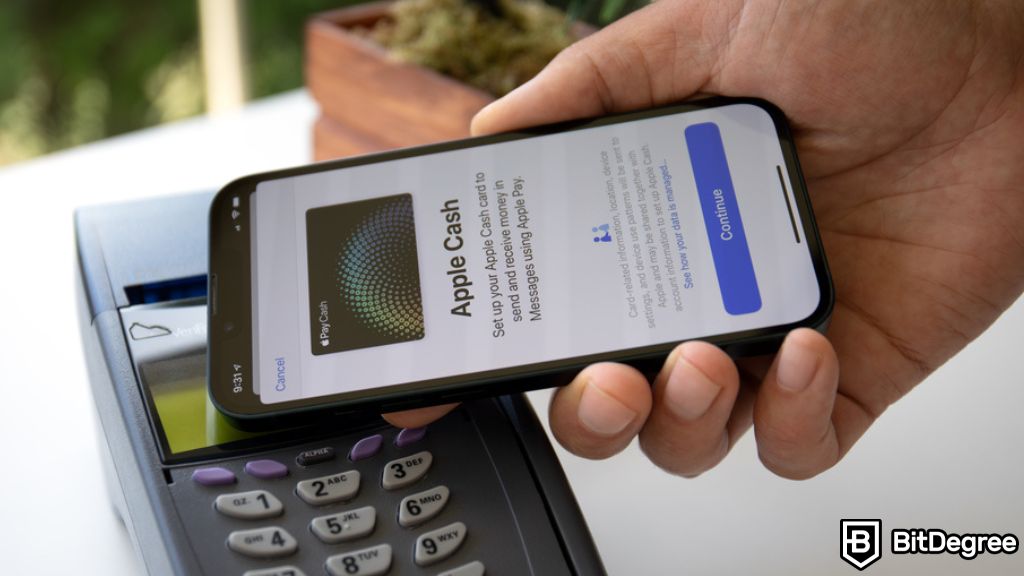Key Takeaways
- Virtual currency refers to an electronic currency used primarily for online transactions. It can be in various forms, such as digital tokens, points, or rewards.
- How do virtual currency vs cryptocurrency differ? It’s in their operation modes and underlying technologies! Virtual currency can be decentralized or centralized, while cryptocurrency is mostly decentralized and equipped with blockchain technology.
- Virtual currency types can be divided based on currency flow, legal status, and use cases.
Free Airdrop Season 7 is LIVE! Answer fun questions or do simple tasks to earn rewards from the $30K BitDegree prize pool. Participate Now ! 🔥
Do you realize that virtual currency has become a significant part of our daily lives? It has shaped how we shop, play, and interact online. Imagine earning points whenever you shop at your favorite cafe or receive rewards for playing your favorite mobile game.
Wait, “What is virtual currency, and how come loyalty points are part of this concept?”, you might ask. Well, you’ve come to the right place! All of the questions will be answered here – from the basic concept to the differences between digital currency vs virtual currency vs cryptocurrency.
After reading this article, if you’re interested in investing in crypto, one of the virtual currency types, ensure you stick to reputable exchanges like Binance. It employs industry-leading security protocols and technologies to safeguard your assets.

Did you know?
Subscribe - We publish new crypto explainer videos every week!
What is AAVE in Crypto? (Beginner-Friendly Explainer)


Table of Contents
What Is Virtual Currency?
Virtual currency is a type of digital currency primarily used in online environments. It exists solely in electronic form, usually within an online community or platform, and is not physically tangible like coins or banknotes.
Latest Deal Active Right Now:Head to BitDegree Missions, gather as many Bits as possible & claim your stake of the $30,000 Prize Pool! Don't waste your time & start collecting Bits by completing Missions and referring friends.
This type of currency operates independently of traditional banking systems – they're not issued or regulated by any central authority, like the government or central bank.
Besides its decentralized nature, virtual currency is often characterized by the use of cryptographic techniques for security, providing measures to protect transactions and ensure authenticity.
Several cryptographic techniques commonly used in virtual currency systems are:
- Public-key cryptography. It’s a method using pairs of keys: a public key, which is shared openly and used to encrypt data and create secure digital wallets, and a private key, which is kept secret and used to decrypt the data and authorize transactions.
- Digital signatures. These provide authentication and non-repudiation for transactions. Users who initiate transactions utilize their private key to generate a unique digital signature. The signature is added to the transaction details and can be checked by anyone using the user’s public key.
- Hash functions. In virtual currency systems, hash functions create unique identifiers for each block in the blockchain. The hashes are crucial for maintaining the blockchain’s integrity, as any change to the block’s data would result in a completely different hash.
- Consensus mechanisms. These are cryptographic protocols used to get agreement among network participants on the validity of transactions, such as Proof of Work (PoW) or Proof of Stake (PoS).
- Elliptic curve cryptography (ECC). It’s a public-key cryptography that uses the math of elliptic curves to make secure key pairs. It’s often used in virtual currency systems because it’s efficient and can provide strong security with shorter key lengths than other algorithms.
Virtual currency can take various forms, including cryptocurrencies like Bitcoin and digital tokens, and is often used for online transactions within virtual worlds, online gaming, or social networks.

Everyday examples of virtual currency you may encounter include:
- Loyalty points. These are rewards programs offered by businesses where customers earn points for purchases and can redeem them for free products or discounts.
- In-game currency. It refers to virtual currencies used within online gaming platforms to purchase goods, upgrades, or items. Examples include V-Bucks in Fortnite and Robux in Roblox.
- Digital gift cards. These are electronic gift cards or vouchers that you can use to purchase online or in-store, often with specific retailers or brands.
- Mobile payment apps. These digital wallets enable users to store funds electronically and make transactions using their smartphones. Examples include Apple Pay, Google Pay, and PayPal.
The examples above illustrate the daily usage of virtual currencies. Meaning, you may already be familiar with it! From shopping and gaming to digital payments, this currency has become increasingly prevalent in various aspects of our lives.
I hope this section has answered the question, “What is virtual currency?”. But do you wonder how it differs from digital currency and crypto? Don’t worry; I’ll explain the differences in the next section!
Digital Currency vs Virtual Currency vs Cryptocurrency
Digital currency, virtual currency, and cryptocurrency are terms often used interchangeably, but they refer to different concepts.
Digital currency is a broad term comprising any form of currency that exists in digital or electronic form. It can be either traditional fiat currency (government-issued currency like USD or EUR) or alternative forms of currency.
This currency can be centralized or decentralized, depending on their issuing authority and underlying technology.
Examples include bank deposits, digital payment systems (e.g., PayPal, Venmo), and central bank digital currencies (CBDCs).

Meanwhile, virtual currency is a specific type of digital currency primarily used in virtual or online environments. It’s usually decentralized and often used for online transactions within virtual worlds, gaming, or social networks.
Examples are V-Bucks in Fortnite and digital tokens in decentralized applications (dApps).
On the other hand, cryptocurrency is a subset of virtual currency that uses cryptographic techniques to secure transactions and control the creation of new units. It mostly operates on decentralized networks, typically based on blockchain technology.
Examples are Bitcoin and Ethereum.
To provide a clearer understanding, check the following table that highlights the key differences and similarities between
| Digital Currency | Virtual Currency | Cryptocurrency | |
| Definition | Any form of currency in the digital world | A specific type of digital currency | A subset of virtual currency |
| Networks | Can be centralized or decentralized | Can be centralized or decentralized | Mostly decentralized |
| Examples | Bank deposits, digital payment systems, and central bank digital currencies | Currencies in the gaming industry and digital tokens used in dApps | Bitcoin (BTC), Ethereum (ETH), and Litecoin (LTC) |
Table: The comparison of digital currency, virtual currency, and cryptocurrency.
In short, all virtual currencies and cryptocurrencies are digital currencies. However, not all digital currencies belong to the other two categories.
And, the differences between virtual currency vs cryptocurrency are evident in how they function and the technologies they use.
Virtual currency may use centralized systems where a central authority processes transactions, while cryptocurrency functions on decentralized networks.
In relation to their operation modes, another distinction between virtual currency vs cryptocurrency lies in their technologies.
Virtual currency may involve centralized databases, digital payment systems and encryption protocols. Meanwhile, crypto’s underlying technologies typically use decentralized networks, cryptographic algorithms and blockchain technology.
History of Virtual Currency
In the previous section, I answered the question, “What is virtual currency, and how is it different from crypto and digital currency?”. Now, you may wonder when its idea started.
Looking at history, gamers and related parties in the 1980s might already have been familiar with the concept of virtual currency due to the development of online gaming worlds. After that, the idea has undergone notable technological advancements and financial innovations!
Here’s a concise overview of significant milestones in the history of virtual currency.
- Early virtual economies (1980s-1990s). The concept of virtual currency first emerged in the 1980s within early virtual worlds, such as MUDs (Multi-User Dungeons) and online gaming environments. Players began using the currencies as a medium of exchange for in-game goods and services.
- Digital cash (1990s). In the 1990s, researchers and technologists began exploring the idea of digital cash as a payment method for online transactions. Innovations like DigiCash and eCash introduced the concept of digital currencies, although adoption remained limited due to technological constraints.
- Early cryptocurrencies (2000s). Cryptographic digital currencies emerged, inspired by the work of cypherpunks. Projects like B-Money and Bit Gold laid the groundwork for what would later become Bitcoin.
- Bitcoin and the birth of virtual currency term (2009). Satoshi Nakamoto introduced Bitcoin, the first successful cryptocurrency. The term “virtual currency” may also have been coined around this time, paralleling the development of various digital currencies and social gaming.
- Expansion of the crypto ecosystem (2010s-2020s). The cryptocurrency ecosystem grew significantly, evidenced by the creation of numerous alternatives (altcoins) and blockchain platforms. Projects like Ethereum introduced smart contracts, enabling the development of dApps and programmable digital assets.
- Current landscape (2020s). In the 2020s, virtual currencies remain a dynamic and evolving space, with ongoing developments in areas such as DeFi and non-fungible tokens (NFTs).
As we reflect on the journey of virtual currency, from its humble beginnings in early virtual worlds to groundbreaking technologies like Bitcoin and Ethereum, it's clear that we've seen remarkable growth and innovation.
Types of Virtual Currencies
In this section, we’ll explore the various virtual currency types. These types can be categorized based on currency flow, legal status, and use cases.
Based on the Currency Flow
Based on the flow within their ecosystems, virtual currencies can be classified into closed, one-way flow, and convertible types.
Closed or fictional virtual currencies refer to currencies with no official correlation to the real economy. An example is in massively multiplayer online role-playing games (MMORPG) like World of Warcraft.
Closed virtual currencies can’t be exchanged for fiat or other currency types outside their closed environments.
Although a gray market may exist for exchanging such currencies for real-world assets, the issuers’ terms of service typically prohibit this practice.
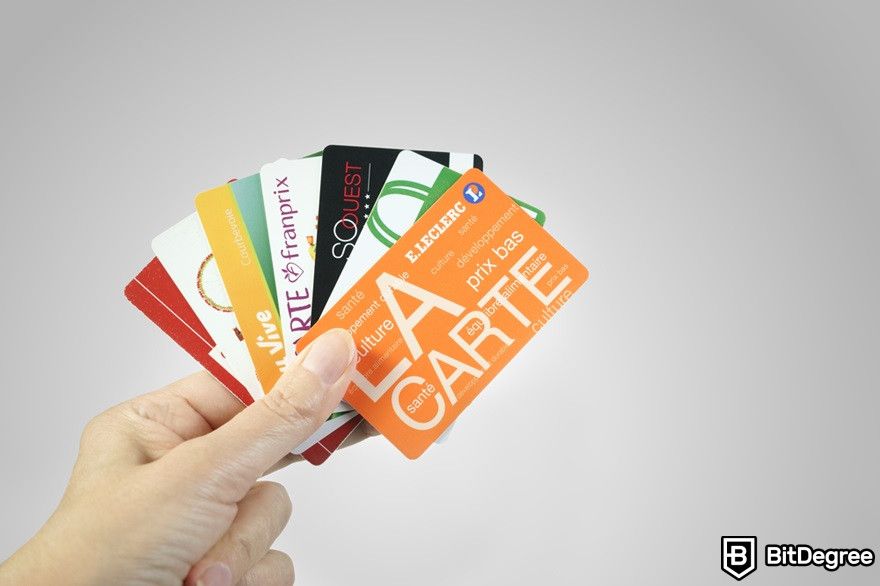
Virtual currencies with currency flow in one direction allow transactions to occur only in one way, typically from users to the issuer and with certain conditions.
Users can get this one-way virtual currency through purchases or other means, but they can’t exchange it back for fiat currency or other assets. The currency generally serves a specific purpose within a closed ecosystem. Examples are coupons, stamps, and reward points.
When a coupon or reward point is redeemed for an eligible asset or service, it loses its original value (hence, flow in one direction).
Other real-life examples are frequent flyer programs (FFP) by many airlines, Microsoft Points, Nintendo Points, Amazon Coin, and Facebook Credits. They also fall into this type of virtual currency, meaning they can be bought but not exchanged back into real money.
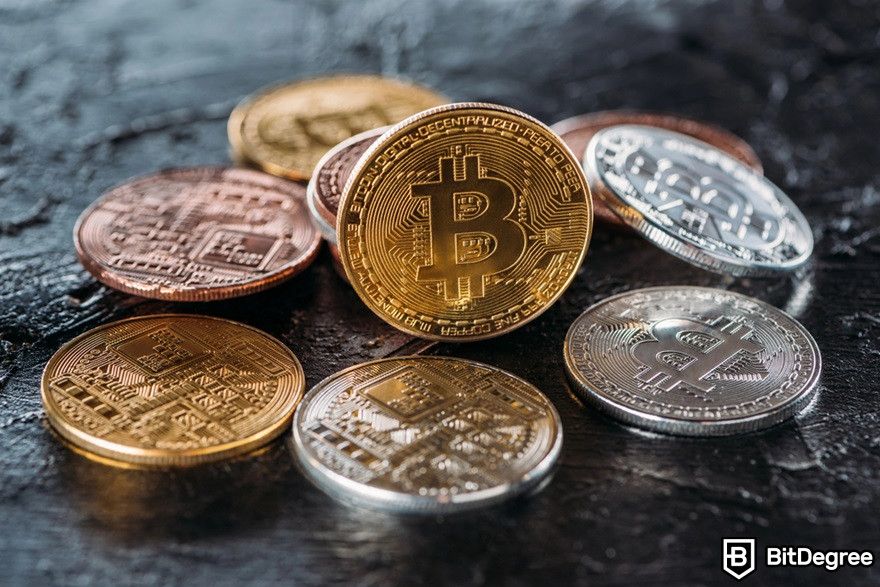
In contrast to the types mentioned above, convertible virtual currencies allow for bidirectional exchange, meaning users can freely convert them into other assets.
This flexibility enables users to buy, sell, and trade them on external exchanges or trading platforms. You can exchange them for fiat currency or other forms of virtual currency.
Convertible virtual currencies often serve as the preferred medium of exchange for various online transactions, investments, and Decentralized Finance (DeFi) activities, contributing to their widespread adoption within the digital economy.
Examples of convertible virtual currencies are cryptocurrencies like Bitcoin, Ethereum, and Litecoin, as they’re readily exchangeable for fiat currency on numerous exchanges worldwide.
Based on the Legal Status
Now, let’s discuss virtual currency types based on their legal status: centralized and decentralized.
As the name suggests, centralized virtual currencies are controlled and regulated by a central authority, such as a government, financial institution, or corporation. These currencies rely on a single entity to oversee transaction processing, issuance, distribution, and regulation.
Examples of centralized virtual currencies include digital representations of traditional fiat currencies, such as digital versions of the US dollar or the euro, issued by banks or financial institutions. These currencies operate on centralized platforms and are subject to regulatory oversight and control.
Centralized virtual currencies offer several potential advantages, including:
- Familiarity with existing financial systems
- Stability
- Regulatory compliance
However, this type of virtual currency has risks. Dependence on a central authority may introduce single points of failure, creating potential vulnerabilities to hacking, fraud, and manipulation throughout the system.
Additionally, centralized control may raise concerns about privacy, censorship, and government monitoring as it handles the transactions.

Conversely, decentralized virtual currencies operate on decentralized networks, such as blockchain, without the need for a central authority or intermediary.
Network participants govern these currencies by consensus and record them on a distributed ledger, a network of nodes or computers spread across the globe that maintains and updates transactions.
The distributed nature ensures transparency, immutability, and security, as multiple participants in the network validate every transaction.
Decentralized virtual currencies offer some benefits, such as:
- Censorship resistance
- Financial inclusion
- Transparency
They provide an alternative to traditional financial systems, granting users greater control over their funds and financial transactions.
Examples of decentralized virtual currencies include cryptocurrencies like Bitcoin, Ethereum, and Litecoin.
Cryptocurrencies operate on decentralized blockchain networks, where participants validate and add transactions to the blockchain through consensus mechanisms such as PoW or PoS. In PoW, these participants are known as miners, while in PoS, they are referred to as validators.
Based on Use Cases
Besides the categorizations mentioned above, it’s also essential to understand multiple use cases of virtual currency, meaning how different industries implement it for various purposes. Understanding these use cases can offer practical benefits, such as facilitating online earning opportunities or streamlining international transactions.
Virtual currencies in this category include tokens and digital assets, currencies in digital worlds and gaming, and DeFi tokens.
Tokens and digital assets represent a broad category of virtual currencies that have gained popularity in the digital economy, including cryptocurrencies and real estate properties.
Examples of tokens and digital assets include:
- Stablecoins like Tether (USDT).
- Utility tokens like Binance Coin (BNB).
- Security tokens representing ownership in real estate or companies.
- Non-fungible tokens (NFTs) representing ownership in digital art.
Tokens and digital assets can fulfill multiple purposes thanks to their versatility and programmability. For example, we can program digital assets with smart contracts, enabling automated and self-executing agreements to protect NFTs’ intellectual property.
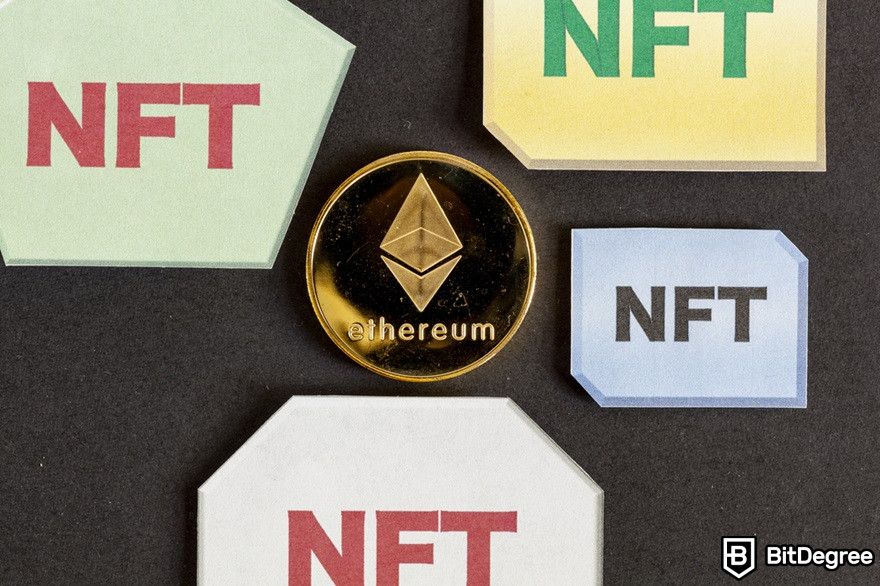
Currencies in virtual worlds and gaming are designed for use in online gaming environments or metaverse platforms. They serve as a medium of exchange[1] for purchasing virtual goods, services, or experiences within those settings.
There are several purposes of virtual currencies in gaming:
- Improve gaming experience. Virtual currencies provide players with a means to get in-game items, upgrades, customization options, or access to premium content, such as virtual weapons, armor, clothing, vehicles, or pets.
- Facilitate player-to-player trading and interactions. Players can buy, sell, or exchange virtual goods and currencies, enabling them to monetize their achievements, skills, or possessions and even earn real-world income through various activities, such as virtual item trading or eSports competitions.
- Incentivize player engagement and participation. Game developers may reward players with virtual currencies for completing tasks, achieving milestones, or participating in events, encouraging continued gameplay and loyalty to the game.
Examples of virtual currencies in gaming include Robux in Roblox, Linden Dollars in Second Life, Gold in World of Warcraft, and Credits in Star Wars: The Old Republic.
On the other hand, DeFi tokens are digital tokens issued on decentralized blockchain platforms.
These tokens are a vital part of the fast-growing DeFi ecosystem, which aims to make financial services available to everyone and increase transparency.
DeFi tokens empower decentralized protocols that cover a wide range of financial activities, including lending, borrowing, trading, asset management, and yield farming. They enable users to participate in those activities directly from their digital wallets.
Users can interact with DeFi protocols to earn interest on their crypto holdings through lending and borrowing, trading assets on decentralized exchanges (DEXs), participating in liquidity pools to earn fees, and accessing financial products like synthetic assets.

DeFi tokens often play a crucial role in governing DeFi protocols through decentralized autonomous organizations (DAOs). Meaning, holders of these tokens have voting rights to participate in the decision-making process regarding protocol upgrades, fee structures, and asset listings.
Examples of DeFi tokens include:
- Governance tokens like Compound (COMP)
- Lending protocols like Aave (AAVE)
- Decentralized exchanges like Uniswap (UNI)
- Synthetic asset platforms like Synthetix (SNX)
Each token serves a specific function within its protocol, providing users with governance rights and economic incentives.
Pros of Virtual Currency
In this section, let’s delve into the next chapter on this type of digital currency: advantages and disadvantages. Knowing the pros and cons of virtual currency will further help you make informed decisions regarding its adoption, regulation, and usage.
First, let’s discuss the advantages of virtual currency!
The most prominent benefit is global accessibility. It enables individuals worldwide to access and participate in the digital economy regardless of geographical location or socioeconomic status.
Unlike traditional financial systems, which may have barriers to entry, such as minimum account balances, documentation requirements, or access limitations, virtual currencies are accessible to anyone with an internet connection and a digital wallet.
Virtual currencies enable global accessibility, as seen in remittance payments.
They allow individuals to send and receive money across borders quickly and affordably compared to traditional bank transfers or money transfer services.

Innovation is another virtual currency’s primary advantage, driving transformative changes in finance and technology.
One example of innovation enabled by virtual currencies is blockchain technology.
Blockchain, the underlying technology behind most cryptocurrencies, changes how data is stored, verified, and secured. This innovation has led to the rise of crypto exchanges like Binance and Kraken, which facilitate the buying, selling, and trading of digital assets.
With decentralized and immutable ledgers, blockchain enables transparent and tamper-proof record-keeping that can improve trust and efficiency in transactions.
Also, if you’re concerned about the physical production and storage associated with traditional currencies, virtual currency can ease those worries. Unlike fiat currencies, which require printing banknotes and minting coins, virtual currencies exist solely in digital form.
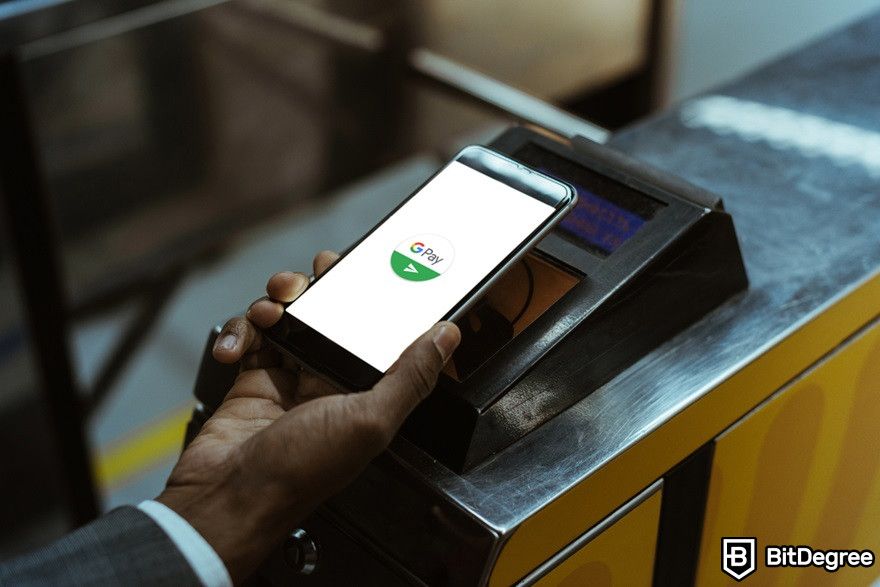
Additionally, many virtual currencies don’t need physical storage in vaults or safes, as they’re stored electronically in digital wallets or blockchain networks.
Without physical production and storage infrastructure, virtual currencies can be created, distributed, and managed flexibly and at lower costs.
Another benefit of virtual currency is its automated transactions.
Unlike traditional payment systems that often involve manual intervention and processing by financial institutions, virtual currency transactions can be executed automatically using smart contracts or programmed protocols.
As a result, we can expect a faster settlement of our fund transfers, even within seconds or minutes.

Automated transactions also don’t need intermediaries, such as banks or payment processors, reducing transaction costs and minimizing the risk of human error.
Furthermore, with automated transactions, developers can create programmable money, allowing users to automate recurring payments, schedule future transactions, or trigger actions based on predefined conditions.
Cons of Virtual Currency
When discussing this type of digital currency, advantages and disadvantages may come together.
As you might notice from the previous section, one prominent benefit of virtual currency is its ability to drive innovations – but this advantage can have certain challenges.
For example, virtual currencies in gaming environments can enhance the experience by allowing players to purchase items, upgrade, or access premium content. However, they can also lead to issues, such as inflation within the virtual economy and potential scams or hacking incidents targeting players’ virtual assets.

So, let’s highlight the pros and cons of virtual currency to help balance your understanding.
To start, one of this currency’s disadvantages is its security risks.
Virtual currency platforms are attractive targets for hackers seeking to steal funds or disrupt operations. Security breaches can lead to the loss of funds and unauthorized access to sensitive information.
Furthermore, there are many scams and fraudulent schemes in the virtual currency world. Scammers can trick people into giving them money or personal information through fake investment offers and phishing attacks.

One of the common scams is the Ponzi scheme. It’s a type of investment scam where returns are paid to earlier investors using funds collected from newer investors rather than from actual profits.
Another security risk is the vulnerability of virtual currency’s underlying technologies to programming errors. They may be prone to bugs, which can be exploited by malicious parties to manipulate transactions or steal funds.
The next con of virtual currency is the lack of consumer protection.
Lack of consumer protection refers to the absence or limited availability of mechanisms to protect individuals using virtual currencies from financial harm, fraud, or loss.
Unlike traditional financial systems, which are often subject to regulatory oversight and consumer protection laws, virtual currency transactions may lack similar protections, leaving consumers vulnerable to various risks and uncertainties.

One significant concern is the lack of recourse for consumers in disputes or fraudulent transactions.
In traditional banking systems, consumers can access avenues for recourse, such as chargebacks or reimbursement for unauthorized transactions.
Meanwhile, virtual currency transactions are irreversible. Once a virtual currency transaction is confirmed and recorded on the blockchain, it can’t be easily reversed or undone, leaving consumers with little recourse in fraud, theft, or error cases.
Regulatory hurdles and uncertainty are also other challenges you need to be aware of when dealing with virtual currency.
Virtual currencies operate in a rapidly evolving space, making it difficult for regulators to keep pace with technological developments and emerging use cases.
As a result, businesses and users may face uncertainty about how virtual currencies are treated under the law, leading to compliance challenges and legal risks.

The regulatory hurdles can create barriers to entry for businesses and startups operating in the virtual currency space.
Moreover, strict regulatory requirements, such as licensing, registration, and compliance with anti-money laundering (AML) regulations, can increase business costs and administrative burdens. Consequently, innovation and investment in the virtual currency ecosystem may be hindered.
Environmental concerns are also a significant consideration when using virtual currency.
Virtual currencies, particularly cryptocurrencies like Bitcoin, rely on a process known as mining to validate transactions and secure the network.
Mining involves using powerful computer hardware to solve complex mathematical puzzles. This process needs significant electricity[2], contributing to carbon emissions and environmental degradation.

Another environmental concern related to virtual currency mining is electronic waste (e-waste) generation.
The rapid turnover of mining hardware and the constant need to upgrade equipment to remain competitive result in the disposal of outdated hardware, contributing to e-waste.
Conclusions
In this article, we’ve comprehensively discussed virtual currency, a specific type of digital currency – advantages and disadvantages, history, as well as how it differs from other similar concepts.
So, to answer the question, “What is virtual currency?”, you now know it’s a digital currency that exists solely in electronic form, typically in a specific platform or environment.
When talking about this digital currency, advantages and disadvantages come hand in hand. Virtual currency offers multiple benefits, like automated transactions and global accessibility, but it also has certain risks you should be aware of, such as scams and a lack of customer protection.
Sounds interesting? You can start your virtual currency journey by getting a crypto wallet likeLedger to securely store digital assets. From there, consider exploring various exchanges to buy, sell, and trade cryptocurrencies, expanding your portfolio and participating in the dynamic world of digital finance.
The content published on this website is not aimed to give any kind of financial, investment, trading, or any other form of advice. BitDegree.org does not endorse or suggest you to buy, sell or hold any kind of cryptocurrency. Before making financial investment decisions, do consult your financial advisor.
Scientific References
1. T. Zalan, P. Barbesino: ‘Making the metaverse real’;
2. W. Ye, W. Wong, G. Arnone, et al.: ‘Crypto currency and green investment impact on global environment: A time series analysis’.

